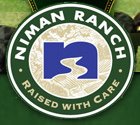Wednesday, May 31, 2006
This logo is a croc. (sorry, I couldn't control myself)
 In the early 1960’s, my friends and I hung out a lot at the Flamingo Park tennis courts in Miami Beach (where I grew up). We kids were only allowed to play on the concrete courts; they saved the clay courts for the privileged few who had the right shoes—and the right shirt. In this case, it was a white polo shirt with a green embroidered crocodile appliquéd on it. A Lacoste tennis shirt.
In the early 1960’s, my friends and I hung out a lot at the Flamingo Park tennis courts in Miami Beach (where I grew up). We kids were only allowed to play on the concrete courts; they saved the clay courts for the privileged few who had the right shoes—and the right shirt. In this case, it was a white polo shirt with a green embroidered crocodile appliquéd on it. A Lacoste tennis shirt.René Lacoste, a famous French tennis player, designed the Lacoste shirt. He wore it when he won the 1926 U.S. Open championship. In 1933, he founded La Societe Chemise Lacoste with André Gillier, the owner and President of the largest French knitwear manufacturing firm at the time. They began to produce the classic Lacoste polo shirt. By the way, decades before the designer jean frenzy of the 1970s-1980s, the Lacoste crocodile appliqué embroidered on the chest, represented the first example of a brand name appearing on the outside of an article of clothing.
When Lacoste brought the shirts to the U.S. in the 1950s, they were a huge hit—the perfect preppie fashion statement—and their popularity lasted through the 1960s. General Mills acquired the brand in 1969, combined it with Izod and ran it (and the ubiquitous green crocodile logo) into the ground. Finally, they reduced the price to $35, and sold it everywhere, even to low-end stores like Wal-Mart. After that, the brand disappeared from American shelves.
But you can’t keep a good brand down. Lacoste is coming back, and CEO Robert Siegel, formally of Levi Strauss and Stride Rite, is driving the turnaround bus. Today, there’s a revival of Lacoste as a fashion statement. Teenagers and young adults are beginning to wear the classic polo. Professional tennis players and golfers are also wearing the shirt. What’s more, Lacoste has eneterd the “lifestyle” brand aerna. In addition to clothing, the little green crocodile logo is found on footwear, perfume, leather goods, watches, and eyewear.
So what have we learned here? When it comes to classic brands, absence makes the heart grow fonder. Hmm…I wonder if it’s time to bring to bring back the Pierre Cardin brand name again.
Monday, May 29, 2006
How to turn your HR policy into a viable brand promise

Like Safe Auto (scroll down for their story), Stanley Steemer International, Inc. is another company shaping their brand around fear. Stanley is one of the nation’s largest in-home carpet cleaning service—backed by more than 50 years of consistent, reliable, quality service (according to their Web site). But now they are selling more than just clean carpets; they are selling “clean” carpet technicians.
Stanley’s tag line is “A clean you can trust.” A TV spot for Stanley Steemer that’s running in the Atlanta market now provides a new perspective on it by focusing on the dangers of letting just anyone into your home. The spot’s key message: You can trust Stanley Steemer not to send drug addicts with prison records into your home to steal your valuables and rape your teenage daughter.
Essentially, what Stanley Steemer is advertising here is their HR policy: (again from their Web site) “Stanley Steemer hires the highest quality individuals to serve our customers. Therefore, candidates will be required to pass a drug test, motor vehicle record and criminal background check.”
In this commercial, clean carpets are a given, a commodity. I’m not sure that’s a wise direction for Stanley. Other carpet cleaning companies have HR manuals, too.
Monday, May 22, 2006
Branding beef the modern way
In the old days, when you went prospecting for gold, all you needed was a shallow metal pan and a riverbed. Today gold mining is unbelievably complex. The law of diminishing returns has set in. All the easy-to-find gold ore has been mined. But opportunities are still out there. Using new technologies, for example, mining companies are now squeezing nanosized particles of gold ore from long ignored places, like deep within mineral deposits.
 That same strategy can apply to brands. Just find a commodity that’s never been branded before or lacks a dominant brand leader. A case in point: meat. To be sure, most supermarkets offer their own brand of meat. But what we’re talking about here is a brand that transcends the grocery store. And the restaurant menu.
That same strategy can apply to brands. Just find a commodity that’s never been branded before or lacks a dominant brand leader. A case in point: meat. To be sure, most supermarkets offer their own brand of meat. But what we’re talking about here is a brand that transcends the grocery store. And the restaurant menu.
Two premium meat brands come to mind: Niman Ranch and Certified Angus Beef®. The latter puts intense emphasis on consistent quality and brand integrity. It promises and delivers “exceptional taste with every mouthwatering bite.” You’ll find the Certified Angus Beef® brand in discerning restaurants and grocery stores worldwide—at a premium price.
Niman Ranch takes a more New Age, organic approach to raising beef. According to their Web site, Niman’s ranchers, butchers, office staff, and drivers help fulfill its founding vision—to bring the best possible meat to customers while practicing the highest standards of husbandry and environmental stewardship. Its list of “where to eat (Niman Beef)” reads like a who’s who of the nation’s trendy and expensive restaurants.
Another commodity now being branded is bedding plants. You buy pots and trays of them every spring at garden centers, hardware stores, discount stores—and you could care less who grew them. The folks at VIVA! are changing that. Their brand difference is their pot. It features colorful images of flowers, along with planting instructions and growing tips. In a sense, each pot becomes its own POS display. It seems to be working. (Of course having an exclusive distribution arrangement with Home Depot doesn’t hurt sales either.)
every spring at garden centers, hardware stores, discount stores—and you could care less who grew them. The folks at VIVA! are changing that. Their brand difference is their pot. It features colorful images of flowers, along with planting instructions and growing tips. In a sense, each pot becomes its own POS display. It seems to be working. (Of course having an exclusive distribution arrangement with Home Depot doesn’t hurt sales either.)
 Another grower stepping up to the brand plate is Bonnie Plant Farm. A wholesale grower of vegetable and flower plants since 1918, they were virtually invisible to consumers. Now that’s beginning to change. In a pull-through campaign, Bonnie is running TV spots on the quality and easy plantability of their flowers and vegetables.
Another grower stepping up to the brand plate is Bonnie Plant Farm. A wholesale grower of vegetable and flower plants since 1918, they were virtually invisible to consumers. Now that’s beginning to change. In a pull-through campaign, Bonnie is running TV spots on the quality and easy plantability of their flowers and vegetables.
Funny thing though, while we are taking about branding, there isn’t a TM, SM or ® to be found anywhere on the Niman’s Ranch Web site. Not even next to their logo. Likewise for the Bonnie Plant Farm Web site and the VIVA! Web site (except for an occasional ® that appeared in a few of their press releases). Only the Certified Angus Beef® maintained anything close to brand integrity.
So what’s the next commodity to be branded? Look around, there are opportunities everywhere. Try this one: Organically grown dried beans. Think great packaging. Think Whole Foods for distribution. Now you’re getting it.

 That same strategy can apply to brands. Just find a commodity that’s never been branded before or lacks a dominant brand leader. A case in point: meat. To be sure, most supermarkets offer their own brand of meat. But what we’re talking about here is a brand that transcends the grocery store. And the restaurant menu.
That same strategy can apply to brands. Just find a commodity that’s never been branded before or lacks a dominant brand leader. A case in point: meat. To be sure, most supermarkets offer their own brand of meat. But what we’re talking about here is a brand that transcends the grocery store. And the restaurant menu.Two premium meat brands come to mind: Niman Ranch and Certified Angus Beef®. The latter puts intense emphasis on consistent quality and brand integrity. It promises and delivers “exceptional taste with every mouthwatering bite.” You’ll find the Certified Angus Beef® brand in discerning restaurants and grocery stores worldwide—at a premium price.
Niman Ranch takes a more New Age, organic approach to raising beef. According to their Web site, Niman’s ranchers, butchers, office staff, and drivers help fulfill its founding vision—to bring the best possible meat to customers while practicing the highest standards of husbandry and environmental stewardship. Its list of “where to eat (Niman Beef)” reads like a who’s who of the nation’s trendy and expensive restaurants.
Another commodity now being branded is bedding plants. You buy pots and trays of them
 every spring at garden centers, hardware stores, discount stores—and you could care less who grew them. The folks at VIVA! are changing that. Their brand difference is their pot. It features colorful images of flowers, along with planting instructions and growing tips. In a sense, each pot becomes its own POS display. It seems to be working. (Of course having an exclusive distribution arrangement with Home Depot doesn’t hurt sales either.)
every spring at garden centers, hardware stores, discount stores—and you could care less who grew them. The folks at VIVA! are changing that. Their brand difference is their pot. It features colorful images of flowers, along with planting instructions and growing tips. In a sense, each pot becomes its own POS display. It seems to be working. (Of course having an exclusive distribution arrangement with Home Depot doesn’t hurt sales either.) Another grower stepping up to the brand plate is Bonnie Plant Farm. A wholesale grower of vegetable and flower plants since 1918, they were virtually invisible to consumers. Now that’s beginning to change. In a pull-through campaign, Bonnie is running TV spots on the quality and easy plantability of their flowers and vegetables.
Another grower stepping up to the brand plate is Bonnie Plant Farm. A wholesale grower of vegetable and flower plants since 1918, they were virtually invisible to consumers. Now that’s beginning to change. In a pull-through campaign, Bonnie is running TV spots on the quality and easy plantability of their flowers and vegetables.Funny thing though, while we are taking about branding, there isn’t a TM, SM or ® to be found anywhere on the Niman’s Ranch Web site. Not even next to their logo. Likewise for the Bonnie Plant Farm Web site and the VIVA! Web site (except for an occasional ® that appeared in a few of their press releases). Only the Certified Angus Beef® maintained anything close to brand integrity.
So what’s the next commodity to be branded? Look around, there are opportunities everywhere. Try this one: Organically grown dried beans. Think great packaging. Think Whole Foods for distribution. Now you’re getting it.

Wednesday, May 17, 2006
Making Sense announces new email notification service
If you haven't heard from me lately, it's because the email notification service I was using to alert Making Sense subscribers stopped working. Of course, I was slow on the uptake (I automatically assumed I had done something wrong), but I've now switched to FeedBlitz. They look very promising and buttoned up. So watch for my emails. Thanks.
